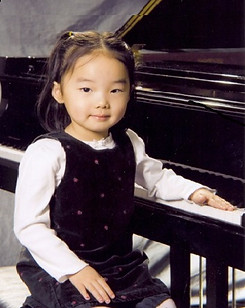Formerly: Suzuki Academy of Music at Nancy Campbell Collegiate Institute
Tel: 519-434-3959 email: suzukipianoprogram@yahoo.com
Suzuki Piano Program London Ontario
Suzuki Piano Method
Dr. Shinichi Suzuki (1898-1998), the founder of the Suzuki method, was a violinist, educator, philosopher and humanitarian. He had observed that children from every culture spoke their native tongue perfectly no matter how difficult the language seemed to be. Young children learn very naturally. By listening to and watching adults speaking, they start speaking too. Amazed by this fact, he believed that if the same principles were applied to music learning, every child should learn successfully. Today, this mother tongue approach, the Suzuki method, has become an internationally acclaimed music education method. It is applied to piano lessons, strings, flute, harp, guitar, voice, and other instrumental lessons. Students are known to be good performers who play with skills and confidence. Many well-known recording artists and orchestra members have their roots in the Suzuki method. Its success has brought thousands of children all over the world the joy of making music. Thanks for Dr. Suzuki’s discovery!
"Where love is deep, much can be accomplished" -- Dr. Suzuki

How does Suzuki Piano Method Work
Suzuki piano method key principles:
-
Begin early. The mother tongue learning process starts at birth. Suzuki piano lessons can begin as early as at the age of three or four. Young children learn to "play by ear" the tunes they heard from the repertoire CD.
-
Parental involvement. The parent works closely with the teacher both in the lesson and at home, creating a musical nurturing environment.
-
Daily listening. The repertoire recording is played repeatedly. Children can easily relate to the music they are learning in their piano lessons. Study should become fun and easy.
-
Mastery of skills. Unlike intellectual knowledge, instrumental playing skills are mastered and perfected by tireless repetition.
-
Praise and encouragement. Students are celebrated for each step of the achievement.
-
Performance environment. Regular group classes and recitals motivate students to perform, and share. They look forward to “show off” their music with tremendous self-confidence.
-
Reading. With the Suzuki piano method, music reading is taught as soon as the child has mastered the basic physical aspect of the instrument, and is ready to take on a different element in the learning.